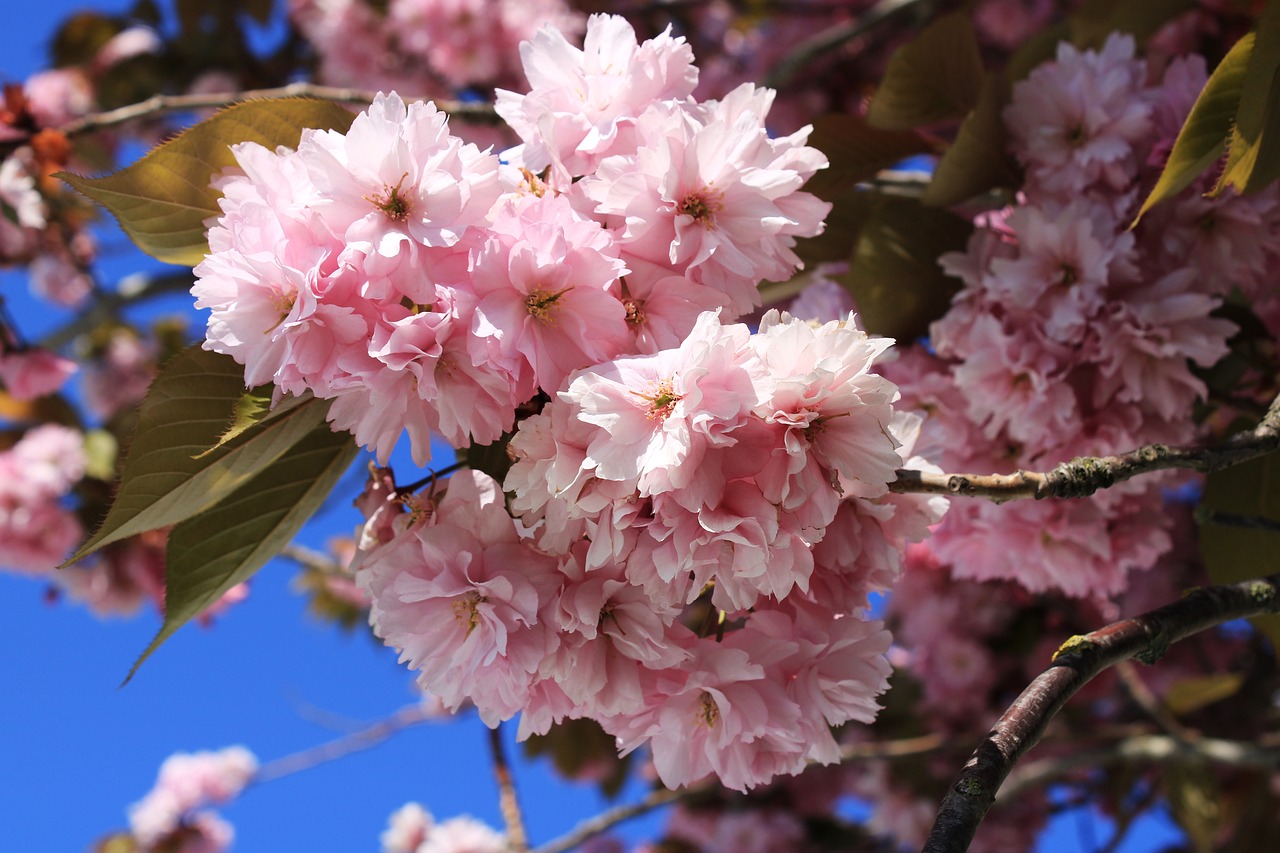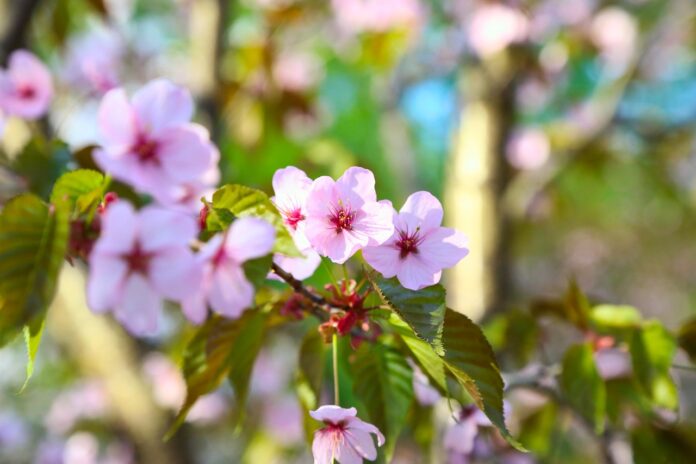One of Japan’s most enduring symbols is the blooming sakura, or cherry blossom. This elegant plant can be found in almost every corner of the “Land of the Rising Sun.” Why has it gained such widespread popularity among the locals?
1. Description of the Plant
The botanical name of sakura sounds more prosaic — Prunus serrulata, or the Japanese cherry. However, despite being a type of cherry, most varieties of sakura are ornamental. There are, in fact, 400 varieties! The cherries that do appear on the trees are tough and very sour, making them unsuitable for regular consumption. But resourceful Japanese people have found ways to use them, such as pickling the fruits for snacks or using them to make fragrant wine.
The tree itself is quite hardy, capable of withstanding both light frosts and scorching heat. On average, sakura trees grow to about 8 meters in height. Their flowers stay in full bloom for about a week before falling off, creating a stunning pink carpet on the ground. However, there’s no need to worry that you can only enjoy the blossoms for one week a year. Depending on the climate, the blooming period can last for several months across Japan’s northern and southern regions.
2. Hanami
According to historical records, in the 13th century, the Japanese cherished plum trees imported from China. Having a blooming plum tree in your yard was seen as a sign of wealth, and passersby admired its beauty. But the emperor at the time decided that his proud nation should have its own traditions, rather than borrowing from the Chinese. Thus, a decree was issued to plant sakura trees throughout the country. The branches covered with soft pink blossoms quickly won over the people, and soon the tradition of “Hanami” — the cherry blossom viewing festival — took root.
Among the aristocracy, it was considered an honor to spend several hours playing games and enjoying festivities under the blooming trees. Common people, though unable to spend as much time on leisure, also found joy in the sight of the blossoms.
Today, although Hanami is not a public holiday, this doesn’t stop the Japanese from leaving work, schools, and universities to head to the nearest park. Special Hanami picnic sets appear in stores, and during the event, you’ll see couples, groups of teenagers, and even office workers in suits enjoying the scenery. Hanami is considered a particularly auspicious day for signing contracts and agreements.
In the evening, the trees transform, often equipped with lights that highlight or even change the color of the sakura petals. The streets become even more crowded with locals and tourists, and the festive atmosphere grows stronger.
3. Sakura in Cuisine
The blooming of sakura also brings a wave of seasonal foods to stores and street vendors. The so-called “taste of spring” manifests in many forms. The most popular treat is perhaps the small rice cake called sakura-mochi, wrapped in sakura petals and often included in Hanami picnic sets. Other notable items include flower jam and jelly with sakura blossoms.
At home, sakura petals are often used as a seasoning or added to tea. In hot water, sakura gives off a delicate aroma, beloved by tea enthusiasts.
The most visually impressive dish is peach jelly, shaped like a sphere with a whole cherry blossom elegantly placed inside. The taste of the dessert matches its stunning appearance.
4. Legend
There’s a legend that tells how sakura reflects the essence of human life. Once, the god Ninigi hosted the two daughters of the mountain god. He was to choose one as his wife. The younger daughter, named Blossom, resembled early spring with her beauty and freshness. The older sister, Tall Rock, was a stately woman, but her features were rough and unattractive.
Blinded by Blossom’s beauty, Ninigi chose her as his bride, sending Tall Rock back in disgrace. Enraged, the mountain god told Ninigi that his married life would be bright and unforgettable, but as fleeting as the sakura’s bloom. Since then, mortal humans have lived only a few decades on Earth instead of the eternity Ninigi could have had if he had chosen Tall Rock.
5. Interesting Facts
- The official sakura blooming season opens in Tokyo’s central park, attended by members of the Imperial family.
- The oldest sakura tree is around 2,000 years old.
- In Japan, companies offer services to reserve the best picnic spots in parks during Hanami.
- Outside Japan, the tree most similar to sakura is the bird cherry.
- There’s a belief that the more you eat and drink during Hanami, the more abundant your table will be for the rest of the year. Sadly, several people die each year from overeating or alcohol poisoning, while others simply enjoy the beauty of the blossoms.
- Sakura is the most popular motif in clothing, dishware, and home décor.
- Special TV broadcasts are available for those unable to leave their homes. They feature continuous coverage of the cherry blossoms, and Japanese viewers enjoy watching the entire blooming process.
- Despite being known as workaholics, the Japanese take time off during Hanami to spend as much time as possible in parks.
